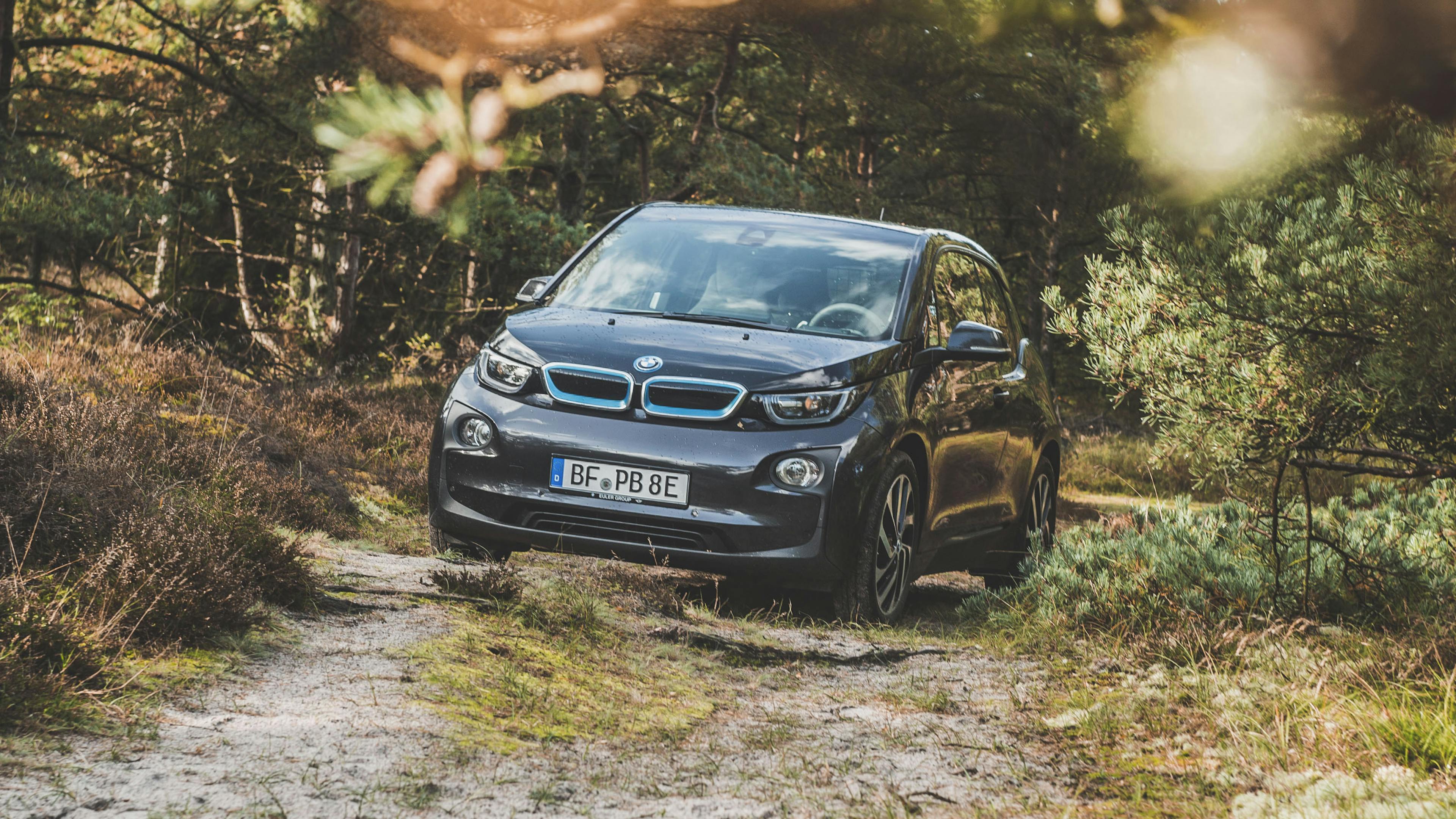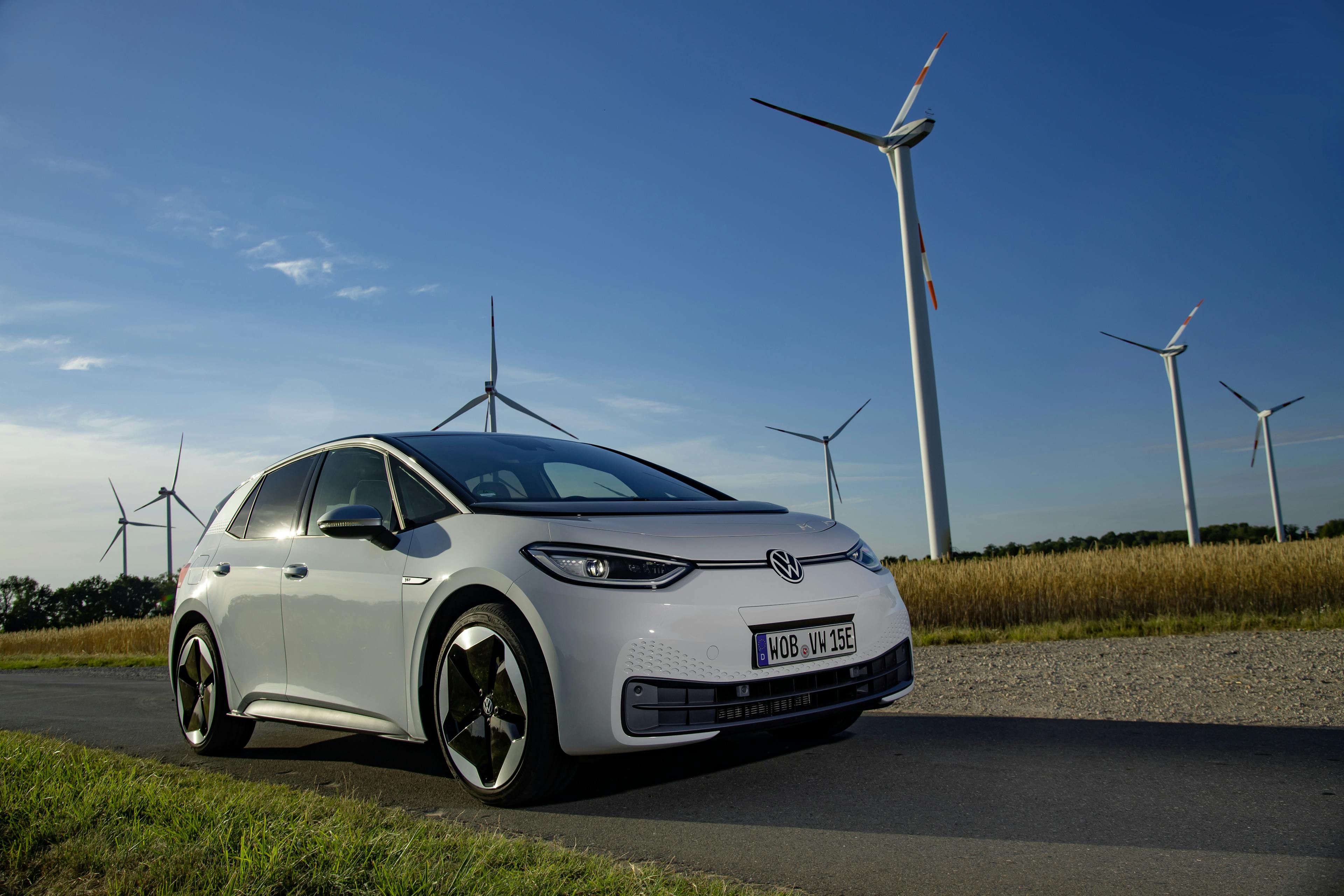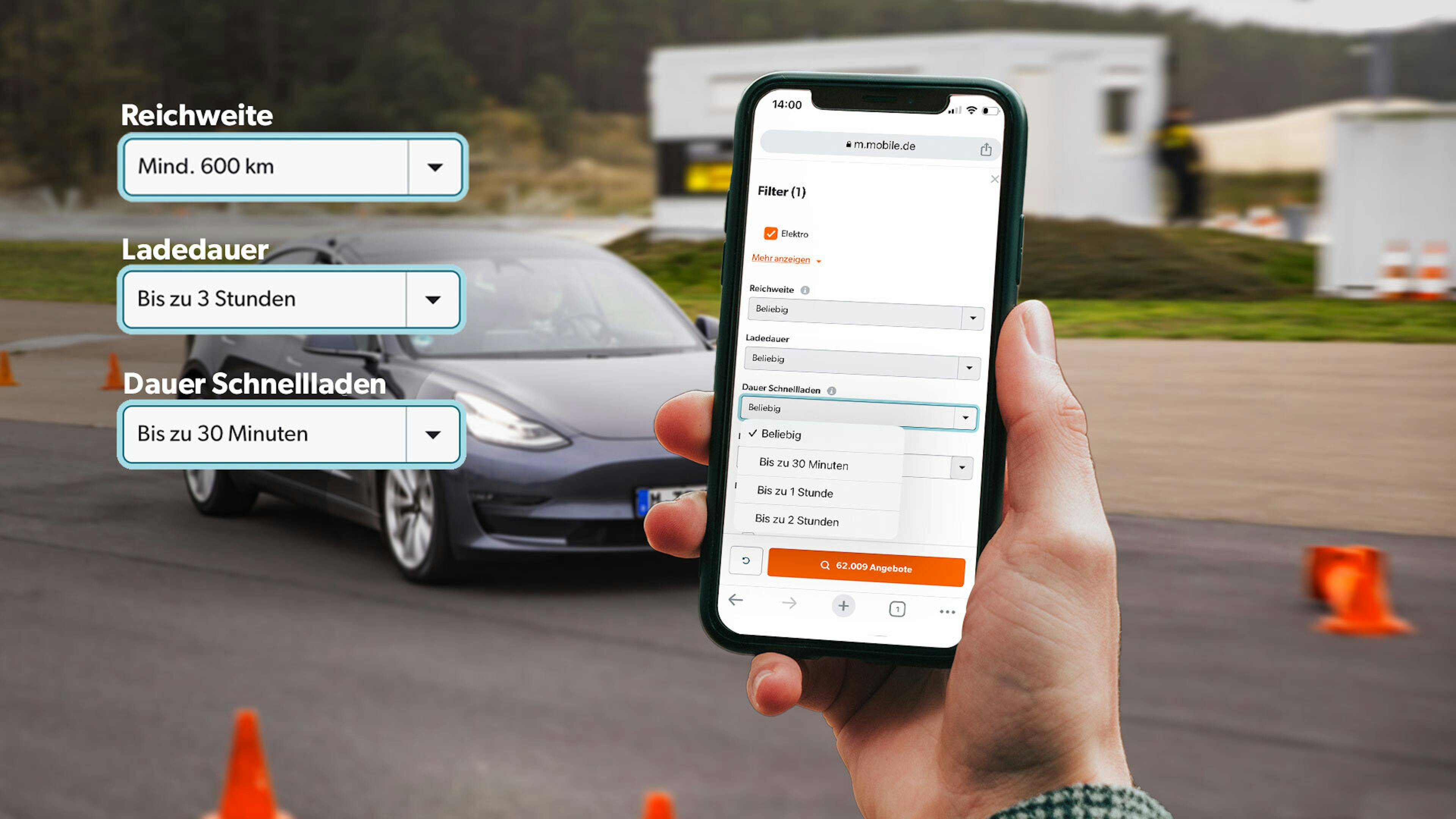Life cycle assessment of electric cars: How good is it really?
No exhaust, no exhaust fumes. Electric cars are locally emission-free. In this way, they do not pollute the air quality in the immediate vicinity. But does this make electric cars the more environmentally friendly cars? To do this, their entire life cycle assessment must be considered. How many CO2 emissions are generated over the entire development and life cycle of the electric car? Is battery production really so much at the expense of the environment? At what mileage does the electric car overtake the combustion engine in terms of environmental balance?
The most important things in brief:
- The electricity mix has a major influence on the life cycle assessment of e-cars.
- Electric cars are more climate-friendly after just a few years.
- Manufacturers are reducing emissions in battery production.
When are pure electric cars more climate-friendly than other types of drive?
When comparing individual drive types, many factors are important. This also includes the vehicle class and the design. This is because large and heavy vehicles, such as luxury SUVs, need batteries with a higher energy content for everyday and long-distance ranges. Their production is currently still very energy-intensive, so high CO2 emissions are generated, which is why battery-electric cars still carry around a large CO2 backpack.
In 2018, the FIA (Fédération Internationale de l'Automobile), the ADAC and the Austrian automobile club ÖAMTC commissioned the Johanneum Research Forschungsgesellschaft in Graz for the first time to prepare a life cycle analysis of the various drive types. Since then, however, the tool has of course been revised and brought up to date. The calculations of the research institution take into account all energy expenditures incurred over the entire service life of the vehicle.
One of the core questions behind the so-called LCA tool (life cycle assessment) is the mileage at which electric cars would be more environmentally friendly compared to other drive systems. The example calculation referred to compact cars such as the VW Golf with around 120 hp. An explicit distinction was made between the current German electricity mix and the use of pure green electricity. Johanneum Research has estimated the total mileage at 240,000 kilometres, i.e. 16 years of 15,000 kilometres each.
The basic conditions have improved
Even the first analysis showed a certain CO2 savings potential of the pure electric drive compared to the classic combustion engine. Even if the calculations were based on the German electricity mix in 2019, the electric car was more climate-friendly than a conventional gasoline car at that time from a mileage of 127,500 kilometers. In the case of diesel, however, the hurdle was 219,000 kilometers, and the BEV (battery electric vehicle) could not avoid a natural gas-powered car over its entire life cycle.
But in the meantime, the background data has changed significantly in favor of e-mobility. In the meantime, for example, more electricity is available from renewable sources, and battery production is also becoming increasingly climate-friendly.
Modern batteries are equipped for high mileages
In addition, the electricity storage systems of the current generation last much longer. For example, the ADAC put the power storage system of a BMW i3 from 2014 through its paces as part of a long-term test. After 100,000 kilometers and five years, 86 percent of the original battery capacity was still available. The testers predicted that the capacity would still have been 70 percent after ten years and 200,000 kilometers. Manufacturers are now placing much more trust in their batteries, as they have become more durable thanks to intelligent battery management and optimized cell chemistry. The Toyota subsidiary Lexus, for example, gives a warranty of ten years or one million kilometers on its lithium-ion batteries.
The e-car is already more climate-friendly after just three years
Due to the drastic changes, the FIA commissioned Johanneum Research again in 2022 to update the LCA tool. For the battery capacity of a purely electric car, the researchers had initially assumed a moderate 40 kilowatt hours (kWh), but for the latest version it is a more realistic 55 kWh.
The following table shows the mileage above which the e-car drives in a more climate-friendly way than comparable vehicles with other drive concepts.
| Fuel | Electricity mix (D 2022) | Electricity 100% renewable |
|---|---|---|
| Gasoline (with 5% bioethanol) | from 45,000 km | from 25,000 km |
| Diesel (with 7% biodiesel) | from 60,000 km | from 30,000 km |
| Natural gas CNG (with 15% biomethane) | from 75,000 km | from approx. 40,000 km |
| Plug-in hybrid (petrol/electric mix D) | from 75,000 km | from approx. 35,000 km |
| Plug-in hybrid (petrol/100% regenerative) | from 165,000 km | from approx. 50,000 km |
| Fuel cell (H₂ from natural gas) | from 30,000 km | from approx. 10,000 km |
| Fuel cell (H₂ 100 % renewable) | never | from approx. 160,000 km |
The table makes it clear: With the current electricity mix, electric cars are much more climate-friendly than gasoline, diesel, natural gas-powered cars and plug-in hybrids. Compared to the first version of the LCA tool, the mileage required to reach this threshold has been more than halved for the most part. If 100 percent of the electricity comes from renewable sources, e-cars will perform better than all other drives in terms of climate balance after just a few years.
Life cycle assessment of vehicles: What is it?
The life cycle assessment is responsible for the result. Most drivers know how much fuel their vehicle consumes. But who knows how energy-intensive its production was? So it's no wonder that for most people, an environmentally friendly car is one that emits little exhaust when driving. For the environment, however, the burden begins with the production of the car. All harmful influences from production through the entire life cycle to recycling are summarized under the term life cycle assessment.
The Federal Environment Agency explains the term as a procedure to "record and evaluate all environmentally relevant processes". All factors that can damage the environment are taken into account. What raw materials are used? Which emissions are generated before production, and which during disposal? What pollutants or greenhouse gases are produced during the production of the energy that is consumed in the entire process? Which ones during transport?
In summary, the following values are included in the life cycle assessment:
- CO2 emissions generated during production
- CO2 emissions generated during recycling
- climate-relevant emissions that occur during the production of electricity or fuel and its provision
- Emissions during driving operation
This is how environmentally friendly electric cars are
Of course, other factors also determine the environmental friendliness of electrically powered vehicles. Electric cars are quiet and their drive components do not pollute the direct ambient air with pollutants. The energy required for propulsion comes from the socket, a charging station or is obtained during the journey by means of recuperation. This energy is stored in the batteries in the form of electricity. The batteries, in turn, feed the electric motor(s) for the drive as well as other consumers (air conditioning, infotainment, heating, etc.). Currently, electric cars achieve ranges of 220 to 883 kilometers (according to the WLTP standard), depending on the battery size.
Two factors play the main roles in the environmental balance of electric cars: the batteries and the electricity. Electric cars require relatively large batteries. The larger and heavier a vehicle is, the more powerful the so-called traction battery must be in order to be able to offer good driving performance and a range suitable for long distances.

E-cars are still suffering from battery production
The production of batteries is currently CO2-intensive. In addition, they sometimes contain critical raw materials such as lithium or cobalt. The latter is often cited by opponents of e-mobility as one of the main points of criticism – the mining and processing of metals would violate human rights and damage the environment. The industry has taken on the problem: Some car manufacturers, for example, have significantly reduced the proportion of cobalt in the cell chemistry of their batteries. They are also trying to track the supply chain in order to be able to monitor the path of the raw materials from the mine to the delivery of the car. For example, child labor in the cobalt mines of the Congo is to be prevented. Nevertheless, much more needs to happen in this area.
Recycling and innovation reduce the problem
The fact that rechargeable batteries can be recycled as traction batteries after their life and used elsewhere as storage has a positive effect on the climate balance. In addition, the major battery manufacturers and some car companies are planning recycling plants for the reprocessing of battery ingredients. According to studies, in the long term, the majority of the raw materials used in electricity storage systems should be able to be recycled in new batteries without any significant loss of quality.
In addition, some start-ups and the development departments of car manufacturers are working on new types of electricity storage systems such as the solid-state battery, in which critical raw materials such as cobalt or nickel are no longer needed at all. This is already the case with lithium iron phosphate batteries, which Tesla, for example, already installs in many of its electric cars. Thanks to new production techniques and the consistent use of green electricity in the factories, however, the CO2 footprint of conventional lithium-ion batteries is also shrinking continuously.
Electricity mix influences life cycle assessment
For the life cycle assessment of an electric car, it is also important how the electricity is generated. The electricity mix in Germany comes from different energy sources. In 2022, according to the Fraunhofer Institute for Solar Energy Systems ISE, wind energy accounted for the largest share, followed by lignite.
- Wind power (25.1%)
- Lignite (21.8%)
- Gas (9.6%)
- Solar energy (11.7%)
- Hard coal (11.3%)
- Nuclear energy (6.7%)
- Biomass (8.6%)
- Hydropower (3.1%)
The share of renewable energies in public net electricity generation was 49.6 percent in 2022 and it is expected to grow continuously in the future until wind turbines, solar plants and the like can cover the entire electricity demand of the Federal Republic of Germany in the long term. This will further improve the ecological balance of e-cars. The combustion engine is falling more and more behind. This is also the conclusion of a study by the Federal Ministry for the Environment, Nature Conservation, Nuclear Safety and Consumer Protection (BMUV). In its analysis, the authority assumes that there will be a significant decrease in specific greenhouse gas emissions during the entire service life of the electric vehicle – currently calculated at twelve years. An example: In the case of a vehicle newly registered in 2017, the value is to be reduced from 168 grams of CO2 per kilometer in the first year to 100 grams of CO2 in the last year.
Find electric cars on mobile.de easily now

Conclusion: The electric car is the most environmentally friendly
According to most experts, the battery-electric drive is best suited to reducing CO2 emissions in the transport sector in the long term. One of the reasons for this is its superior efficiency, which at 64 percent is more than three times as high as that of a gasoline engine and is also superior to that of a fuel cell.
At this point in time, the basic requirements, such as the nature of the current electricity mix and the high energy consumption in battery production, may not yet be ideal. But even if you start from the current basic conditions, these initial disadvantages pay for themselves after a few years. Studies, such as those of the Joanneum Research Forschungsgesellschaft in Graz, confirm this assessment. Environmental damage in the extraction of raw materials for the batteries is currently still a major problem, but the industry says it is trying to eliminate this disadvantage as well. Currently, the most environmentally friendly way to drive an electric car is to buy a used electric car and charge it mainly with electricity from the solar system at home.
Find the right electric car with these search filters on mobile.de

On mobile.de, there are new filter options that make it easier for you to find the right electric car. If you select "Electric" as the fuel type in the other filters of the desktop version of the portal, a new submenu with additional tabs will pop up. When searching for your desired electric car, you can now set the desired minimum range, as well as limit the charging time at conventional charging points and fast charging stations. On the advertisement page of the respective vehicles, the plug type is now also displayed.
You can also specify how large the battery capacity of the electric car should be. Since some manufacturers rent or lease the batteries of their e-cars separately from the actual vehicle, you can choose whether the battery should be included in the purchase or whether you want to rent it. You can also set that you are looking for a car without a battery.
